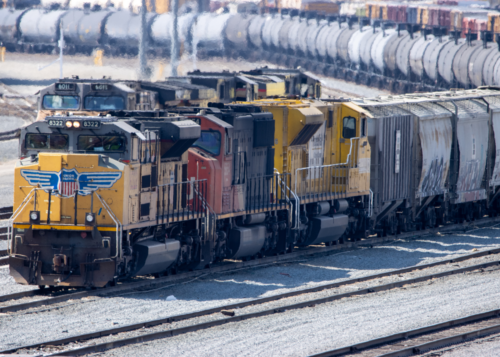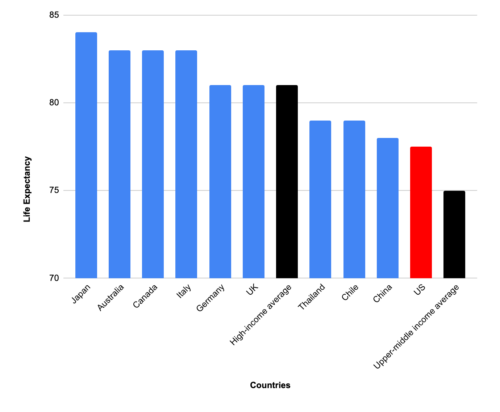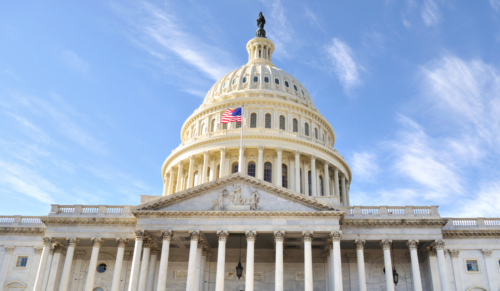The State of U.S. Infrastructure: A Snapshot
By: / 06.30.2010
 We all want the infrastructure market to pick up dramatically and generate jobs, build productivity, and create competitiveness. But there is a yawning gap between public expressions of optimism and what infrastructure executives have been telling me about the state of their business. We continue to hear good news about the infrastructure industry in the media and from the administration, yet head counts at infrastructure firms are still down by as much as 25 percent, and executives say that the U.S. market is still essentially flat.
We all want the infrastructure market to pick up dramatically and generate jobs, build productivity, and create competitiveness. But there is a yawning gap between public expressions of optimism and what infrastructure executives have been telling me about the state of their business. We continue to hear good news about the infrastructure industry in the media and from the administration, yet head counts at infrastructure firms are still down by as much as 25 percent, and executives say that the U.S. market is still essentially flat.
To get a granular picture of the state of infrastructure, my firm, CG/LA Infrastructure, last week sent out a survey of about 11,000 infrastructure executives and professionals throughout the U.S. and in all sectors of the industry. While only a fraction of the responses have come in so far, I’d like to share some preliminary results, which affirm the pessimistic mood that I’ve picked up in conversations. Here’s a snapshot of the state of U.S. infrastructure through the eyes of the men and women running our top firms:
1.) What is your current perception of the U.S. infrastructure market? Fifty-one percent of executives who have responded so far say that the market is “getting worse,” while 33 percent said that it is essentially flat and 15 percent said that it is improving.
The grim results may seem surprising, but it makes sense when you think about it. Most states have not recovered from last year’s cataclysm and continue to cut their budgets across the board. Considering that 70 percent of infrastructure spending is the responsibility of states and municipalities, it would be a surprise if infrastructure spending didn’t go down.
2. In your day-to-day infrastructure work, what are the most problematic issues in terms of improving project development speed? The U.S. needs to dramatically increase investments in infrastructure. Our survey question tried to get at the barriers to that kind of increased investment, and the current problems for restarting the market.
In our menu of options — respondents were allowed to choose as many as they wished from a list of factors — fifty-four percent of infrastructure executives mentioned “financing” as a problem. Meanwhile, 30 percent highlighted weak public sector capacity. This is significant. If we are going to invest in infrastructure, then we need a highly capable public sector.
Additionally 30 percent of executives also highlighted permitting issues as a barrier. Surprisingly, environmental issues, normally the biggest ‘problem’ on any industry survey, ranked fourth, highlighted by only 24 percent of executives.
Clearly the overriding issue is financing. How is that going to be addressed, and who will benefit? These are questions for another survey, and deserve a lot more attention than they are getting – particularly given the preponderant role of state and municipal budgets, and the dramatic weakness in those budgets. And lurking behind these concerns is a question few people are asking: What has become of the Obama administration’s initial National Infrastructure Bank proposal?
3. High-speed rail (HSR) is a signature initiative of the Obama administration. How do you rate this proposal in terms of current progress, and future potential, on a scale of 1-10, with 10 being excellent and 1 being poor? Another striking result: 53 percent of respondents clustered their answers in the 1-3 range (97 percent scored the high-speed rail program “7” or below). The results reflect my experience with industry, where the initial excitement about the program has rapidly given way to doubt and incredulity.
This question allowed for comments, and those comments clustered into two groups: justifications for their scores, and constructive comments on what is wrong with the program. Under the first category, one commenter noted that there were “serious issues…of whether the funding provided will be sufficient to implement a meaningful program and whether the funding will be concentrated on the most promising HSR opportunities.” Another, more critical respondent wrote, “I have not seen any significant developments since the topic was broached.”
On the constructive side: “Existing rail corridors that host HSR should be exempt from most of the overly burdensome environmental laws. This is unnecessary and needless bureaucracy and is slowing everybody waaaaaay down.” Another comment noted that the program “needs a long term funding source; it will not survive as a jobs program.” Perhaps the most critical comment, in terms of strategy, was the following: “There are a few corridors where high speed rail makes a lot of sense; the Northeast corridor in particular. However, there is no national consensus on its utility in other parts of the country.” Without consensus, at a time of tremendous austerity, it is indeed difficult to see this “man on the moon” initiative moving forward. Note that nothing has been spent from the original authorization of $8 billion.
4. In infrastructure, where are the greatest [geographic] opportunities for your firm over the next 12 months? The answers to this question were surprising and underscore that the U.S. infrastructure industry is focused on the home market – and at the same time, does not see much future for itself in that market. Overall, 42 percent of executives surveyed see their greatest opportunities in the U.S., a market that they qualify as depressed. After the U.S. market, 32 percent of respondents see the greatest opportunities in Latin America (a region with four percent of global GDP), followed by North America (the U.S., Canada and Mexico), with 29 percent. Europe and the Middle East were each ranked at 20 percent, while non-China Asia was ranked below 10 percent. None of the infrastructure executives surveyed see opportunities in the closed Chinese market.
5. You expect your firm’s gross revenue in 2010 to _____. Only seven percent believe that their firm’s revenue will grow “significantly” in 2010, with 48 percent projecting moderate growth, and 32 percent stating that economic performance will remain flat. Two facts stand out: It is a cause for concern that 13 percent of executives see their firm’s performances actually declining and 80 percent see moderate or no revenue growth for their firms in 2010. Considering their point of comparison is 2009, the worst year for infrastructure in 80 years, this is dismal news.
All in all, the survey results speak for themselves. U.S. infrastructure executives don’t see much hope for revival this year – in fact, they see things getting worse. President Obama’s signature program, high-speed rail, does not receive anything like passing grades and it is increasingly not being taken seriously. The financing issue — not a surprise for anyone in the infrastructure business — is the number one problem facing the industry.
When I was starting in the infrastructure industry a friend would tell me, over and over, that “nothing is as stubborn as a fact.” Well, these are the facts. We should all take them seriously if we are going to create jobs, generate competitiveness and build opportunities. And it seems like the executives in this most public of industries have a pretty clear grasp of reality, and some good ideas about what should be done.
Photo credit: SP8254






